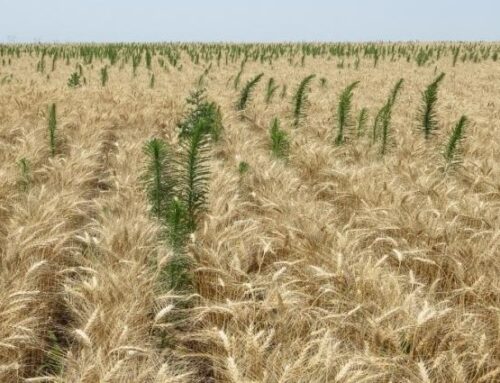
One word that seemingly sums up everyone’s goals in agriculture this year is optimize. Optimize your inputs; optimize your valuable time; optimize your crops’ performance.
One strategy to implement that can help you optimize the health of your crops in the long- and short-term is soil sampling and testing.
Taylor Purucker, crop nutrition lead of eastern North America for Mosaic, says that up to 60% of crop yield is dependent upon soil fertility. Today’s high-yielding hybrids and varieties remove nutrients at higher rates and for longer periods than in the past.
“What this tells me is that without a solid crop nutrition foundation, it is difficult to capitalize on practices like seed technology, pesticides, yield, or other growing season management,” he explains.
Greater nutrient demands might require more frequent or more specific soil testing programs to set the crop up for success.
“Regular soil testing can help make sure growers and crop consultants are applying the right amount of fertilizer in a way that optimizes both yield and economic return,” Purucker says.
QUESTION: What do you recommend to farmers getting started?
ANSWER: First, set your own goals and realize it’s OK to ask a lot of questions, especially if you’re just starting out. Ask:
What am I testing for?
What do I need to evaluate?
How do I track this over time?
And what’s the end goal? With current input and commodity prices, do I want to maintain yields with fewer inputs or do I want to maximize yield with the same amount of inputs?
Every field is unique. You have to consider factors like field history, cropping system, yield level, and organic matter. There is a lot of research from land grant universities that gives guidance based on soil test patterns and economical rates or yield-optimizing rates for a specific nutrient. That helps us design crop nutrition programs that will supply nutrients throughout the entire season.
QUESTION: How often is soil testing recommended?
ANSWER: At a minimum, every two years in high-yield systems. And whether that is in the fall or spring, the important thing to keep in mind is consistency. If a grower or crop consultant is sampling in the fall, I would encourage them to continue to sample and track how yield and nutrient levels change over time.
Part of developing a good crop nutrition program is understanding what the numbers mean on a soil test report. I strongly encourage growers to work with their crop consultants and just understand that the numbers coming back are an index that help us estimate the amount of nutrients that will be available throughout the year.
QUESTION: How do you maintain consistency?
ANSWER: One factor to consider is being mindful of which lab you send samples to. Different extraction methods across commercial labs will change the numbers you see on soil test reports. Be consistent with what you request from a lab. Labs may report nutrient levels in pounds per acre or parts per million, which need different interpretation, so be aware of how numbers are reported.
And just like the time of year, you should be consistent in the depth that you take samples. I recommend that you take a soil probe and with a piece of tape and marker, mark the depth to ensure you’re always at the same level and keep the probe at a 90° angle to the soil.
Finally, consider your goal and objective in taking a soil sample. If it’s to create a fertilizer recommendation for phosphorus, for example, there are certain depths soil labs require because of how they’ve calibrated their recommendations. Oftentimes, that’s a 6-inch soil core. There are other nutrients that are mobile in the soil such as nitrogen where the recommendations are based on a 12-inch soil core. This goes back to knowing what your objective is for which nutrients you are looking at – it often starts with a conversation on soil testing.
QUESTION: What other advice do you have?
ANSWER: I always say that growers have to understand what works best in their farming system. The way that they apply fertilizer might be slightly different than their neighbor does, and it can certainly dictate the way that fertilizer is applied, at what time of year, and with what product. It’s important to understand what the numbers mean, both for nutrient availability and soil health tests, because some of those are still being developed and can change. Ultimately, understand the goal, implement what works best, and incorporate the 4Rs of nutrient management (right source, right rate, right time, and right place).
Read the original article – CLICK HERE




